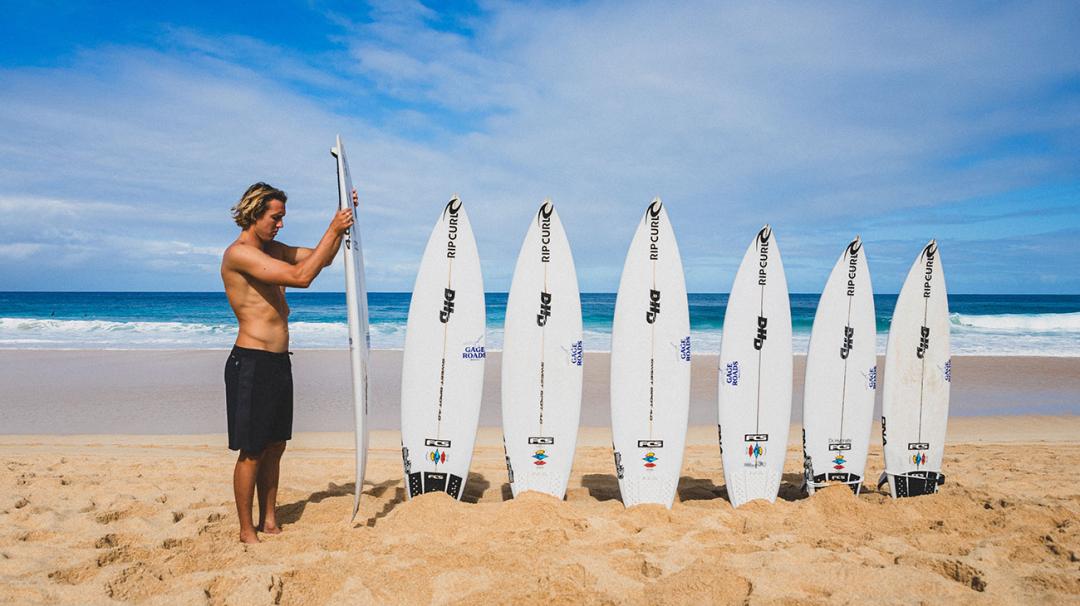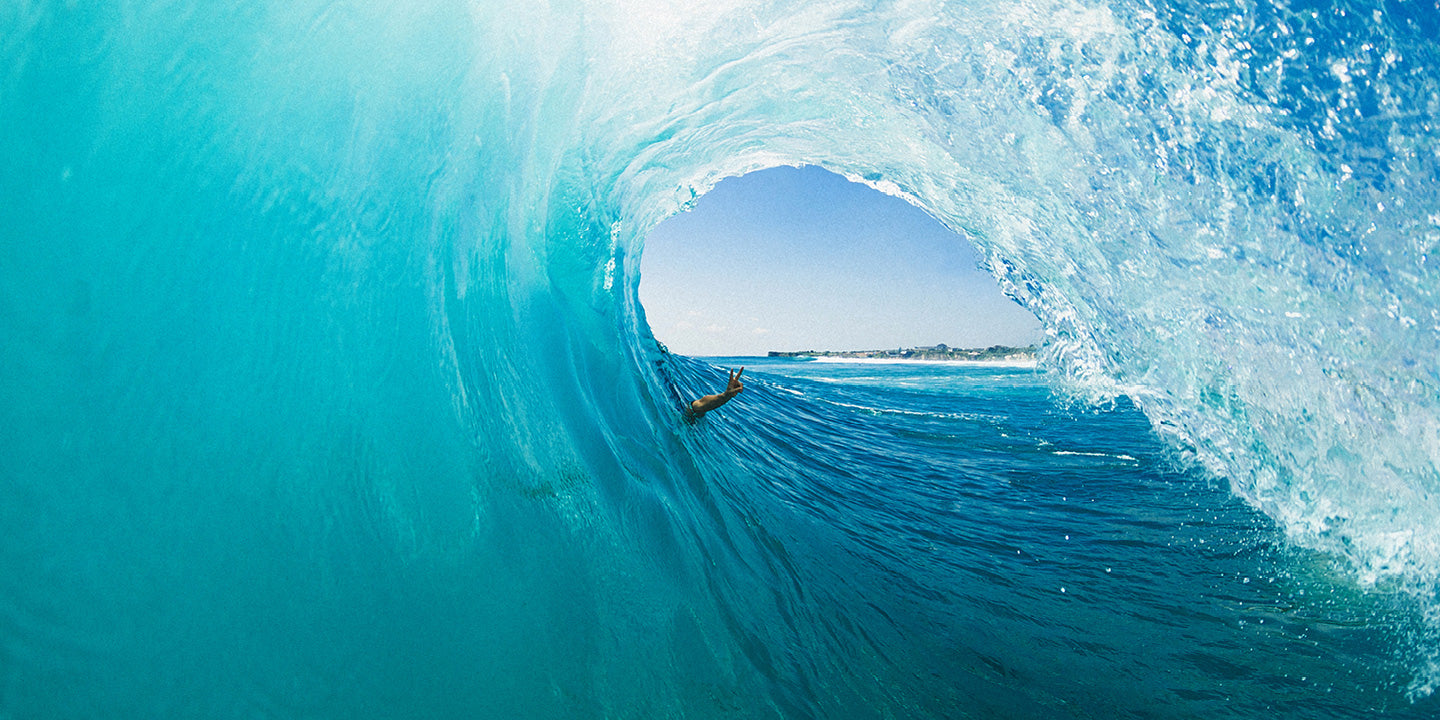How to choose your surfboard: A guide for all levels

Getting into the world of surfing is an adventure that offers a unique feeling of freedom and connection with the ocean. But to make the most of your sessions, it’s essential to understand how to choose your surfboard. A board suited to your level, body type, wave type and goals guarantees fast progression, better stability and, above all, maximum fun in the water. In this detailed guide, we’ll review all the criteria to consider, the different types of boards, the common mistakes to avoid, and expert tips to properly equip your quiver. Whether you’re a beginner, intermediate or advanced, this comprehensive guide will help you make an informed choice and enjoy your future sessions without frustration or backtracking.

Understand the fundamentals
Anatomy of a surfboard: key vocabulary
Before diving into the details of choosing a surfboard, it’s important to know the basics. Every board is made up of several elements: the nose (front), the tail (back), the deck (top), the bottom (underside), the rails (sides) and the fins (skegs). The shape or outline/shape affects speed, stability and turning ability. The board size, its width and thickness determine its volume, a key parameter that must match the surfer’s weight and height.
Different types of boards: pros and cons
There is a wide range of boards suited to every level and surfing style:
- Longboard: Long and stable, perfect for soft waves, ideal for beginners and old-school style lovers.
- Mini Malibu: Versatile and easy to handle, often recommended for progressing surfers.
- Shortboard: Shorter, nimble and fast, suited to tight turns and powerful waves.
- Fish: Wide and thick, allowing high speed in small waves.
- Gun: Designed for big waves and maximum speed, reserved for experts.
Each type of board has specific characteristics. The choice depends on your level, the wave type and your preferred style.
Choosing by skill level
Beginners: why favor foam boards?
When starting out, the priority is to acquire the basics: reading waves, foot placement, first successful takeoffs. The foam board is ideal at this stage. Its great stability and tolerance for mistakes reduce the risk of injury. Sessions are longer because you spend less time swimming after your board and more time practicing. This type of board is also very impact-resistant and affordable, making it an excellent first purchase.
Intermediates: the value of evolutionary and hybrid boards
After your first dozen sessions, you’ll want to progress in speed, work on your turns and try different types of waves. An evolutionary or hybrid board offers the perfect compromise between stability and maneuverability. These models allow duck-diving more easily than a longboard and reaching decent speed while keeping comfort during takeoffs. Their versatility makes them a reliable option to enrich your quiver and explore multiple surf spots.
Experts: criteria for a shortboard, fish or gun
Experienced surfers seek maximum performance and adapt their board to specific waves. A shortboard enables quick maneuvers, a fish is perfect for weak waves, and a gun becomes essential for tackling powerful waves or truly understanding what heavy waves are. The final choice depends on the speed you’re after, your build and your desired surfing style.

Taking body type into account
Calculating your ideal volume: factoring in weight and height
The board’s volume is measured in liters and must match your weight and height. Too little volume leads to difficult takeoffs and chronic instability, while too much volume limits maneuverability. Most online guides and surf products include conversion charts to help with this research.
Summary table: choose your surfboard by level, build and conditions
| Board type | Recommended level | Recommended volume (liters) | Wave conditions | Main characteristics |
|---|---|---|---|---|
| Foam board | Beginner | 40 to 80 L depending on the surfer’s weight | Small waves, weak waves | High stability, safety, easy takeoff |
| Mini Malibu | Beginner to intermediate | 50 to 70 L | Small to medium waves | Good balance of maneuverability and float, fast progression |
| Longboard | Beginner / Old-school style | 60 to 100 L | Small to medium waves, long point breaks | Great paddling speed, comfort and freedom in the water |
| Shortboard | Advanced / Expert | 25 to 40 L | Powerful waves, hollow and fast | Maximum maneuverability, tight turns, high-level performance |
| Fish | Intermediate to expert | 30 to 45 L | Small, fast waves | Extra width for more speed, fun and flow |
| Gun | Expert | 40 to 55 L | Large swell, extreme sessions | Long, narrow, built for speed and control |
| Inflatable board | Beginner or traveler | 40 to 80 L | Varied conditions, frequent travel | Easy transport, practical but less performant |
Tip: always adapt the board size and its volume to your body type and to the European spots you plan to surf to avoid poor choices.
Width, thickness and length: how do they impact performance?
These parameters are essential:
- Width: The greater it is, the more stable the board.
- Thickness: Influences buoyancy and ease of takeoff.
- Length: Determines speed and maneuverability, a key criterion depending on waves.
A good balance of these three elements ensures maximum fun and freedom during your sessions.

Adapting to wave conditions
Understanding the importance of wave type
Waves will shape your choice of board. For small waves, a longboard or fish is ideal. For powerful waves, a shortboard or gun is recommended. If you surf in a wave pool, a short, maneuverable board with good rocker is more appropriate. Don’t overlook this step to avoid gear mistakes.
Choosing a board for the spot you plan to surf
Every spot has its particularities: rocky bottom, sandy beach, wave size, current. If you plan to choose your board according to European spots, adapt your quiver accordingly to avoid frustration and maximize your sessions.
Materials and construction: what should you prioritize?
The advantages of different technologies: foam, epoxy resin, polyester
Each material has its own characteristics:
- Foam: Safety, toughness, ideal for beginners.
- Epoxy resin: Lightness, strength, speed and good responsiveness.
- Polyester and fiberglass: Increased sensitivity, old-school feel, but more fragile.
- Carbon fibers: Used on high-end models for more speed and stiffness.
The construction must match your goals and level. Every board is a trade-off between performance, safety and durability.
Inflatable surfboard: for whom and for what use?
The inflatable board is appealing for its easy transport and minimal storage. Although it offers less performance than a rigid board, it remains an interesting option for travel or occasional sessions where carrying a classic board is complicated.
The often-forgotten criterion: design and aesthetics
Impact on mindset and motivation
Although not a technical criterion, your board’s design plays a role in your motivation. A board with a style you love, with inspiring colors and looks, can influence your mindset and increase your enjoyment in the water. Surfing is also a lifestyle where every detail counts, including seeing your board before each session.

Practical points: storage and transport
Tips for storage without damaging your board
A well-maintained surfboard will accompany you for years and retain its original characteristics. Here are the best practices to adopt:
- Rinse with fresh water every time: After each session, remove salt and sand to prevent the resin or epoxy from weakening over time. Saltwater can cause micro-cracks or discolor your board.
- Dry in the shade: Avoid prolonged sun exposure, which can yellow the fiberglass, delaminate the construction and cause the internal foam to swell. Choose a ventilated area away from excessive humidity.
- Use a breathable board bag: A quality bag protects from UV, scratches and small impacts. Choose a bag sized to the board length to avoid internal movement that could damage it.
- Storage position: Store your board flat or slightly inclined, never resting directly on the tail or nose to avoid deformation. Ideally, place it on a wall rack or padded stand.
- Regular checks: Frequently inspect for any cracks or dents. Even a small opening in the resin can let water in and compromise your board’s lifespan.
By applying these tips, you preserve not only your board’s aesthetics, but also its performance, buoyancy and stability over the course of your sessions.
Solutions to transport your board easily
Transporting a board requires special care, whether you’re going on foot, by bike, by car or by plane. Poor handling can cause irreversible damage, sometimes invisible at first glance. Here are solutions to consider:
- Quality padded board bag: For short and long trips, a thick bag with reinforced nose and tail is essential. It protects the board’s construction from shocks and scratches.
- Secure roof straps: If you’re transporting multiple boards, stack them with pads between, and use non-slip straps to hold them without crushing. Avoid direct contact with the car roof to prevent vibrations and rubbing.
- Internal protection: Wrap the board in a towel or bubble wrap for long-distance travel, especially by plane where handling is rougher. Details like fins can be removed to prevent breakage.
- Specific accessories: Special racks exist for bikes and scooters, letting you reach your favorite spot hands-free while keeping your feet safe.
- Avoid thermal shocks: Don’t leave your board locked in a hot car or exposed to extreme cold for too long. Sudden temperature changes weaken the resin and fibers.
Taking care when transporting your board is just as important as properly choosing your surfboard. A poorly managed impact can alter its shape, skew its characteristics and reduce its effectiveness during takeoffs or your next turns.
Conclusion
Knowing how to choose your surfboard is a must for any surfer who wants to progress and live unforgettable experiences in the water. By taking your level, body type, wave conditions and technical parameters into account, you’ll maximize your chances of success and enjoyment. Remember that a good guide and expert advice will save you from many mistakes. With the right board, your takeoffs will feel natural, your turns smoother, and every session a new adventure in your surfer life.



